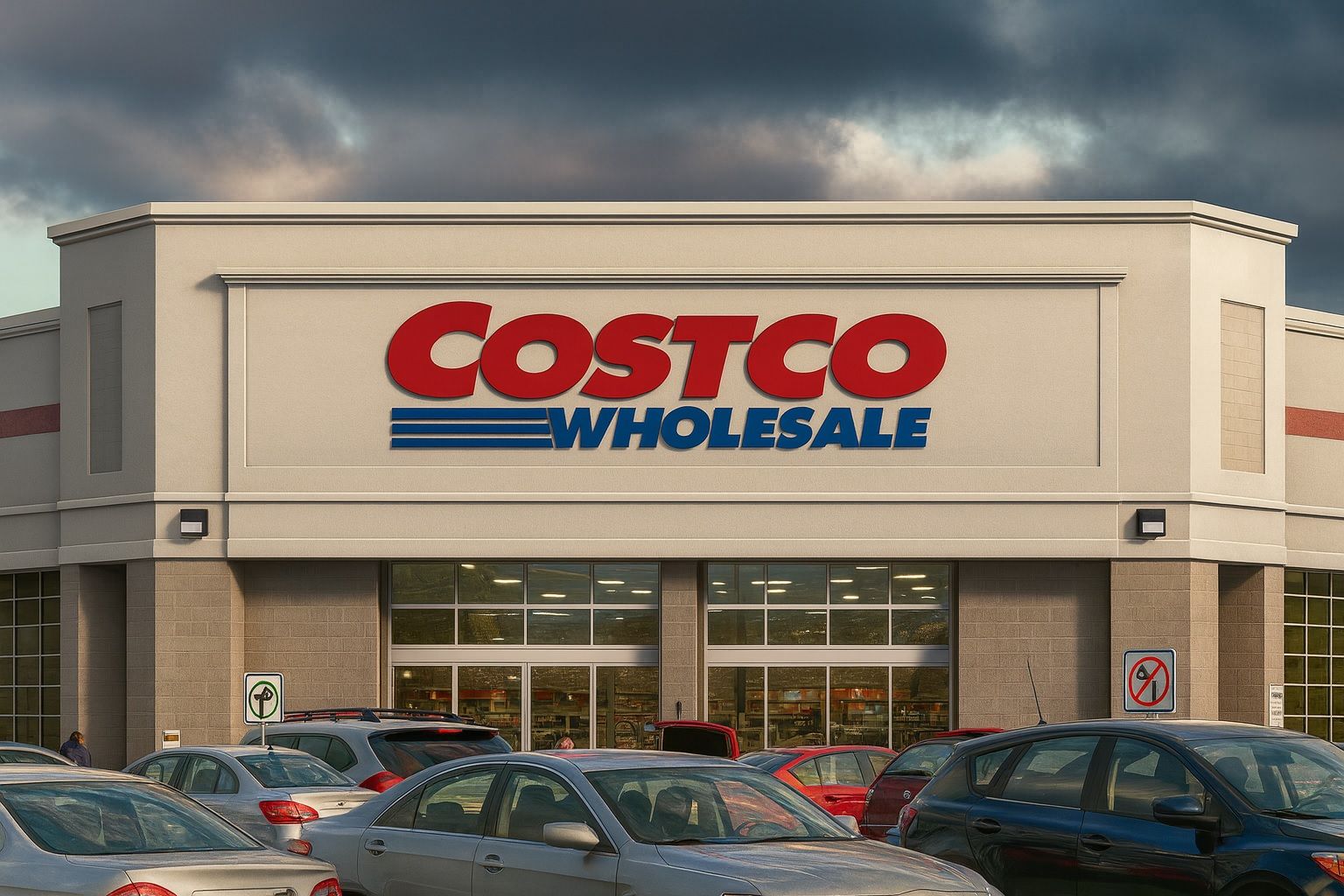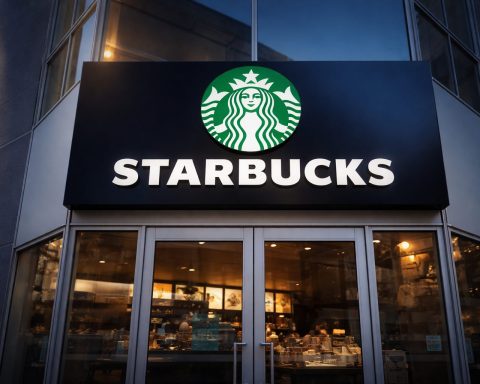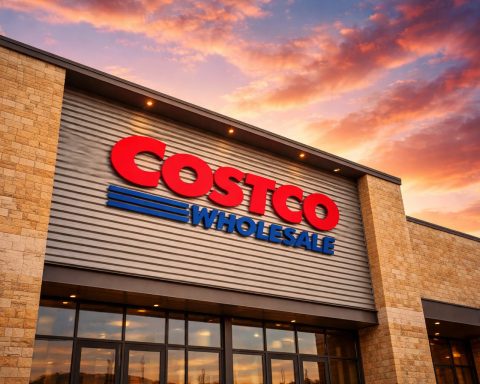Costco Wholesale (NASDAQ: COST) remains a retail powerhouse in late 2025, delivering robust sales growth and solid earnings amid a challenging consumer environment. The COST stock has been trading near record highs, and investors are evaluating whether now is the time to buy Costco shares. This comprehensive Costco stock analysis reviews the most recent news – including strong quarterly results and November 2025 updates – and examines how Costco compares to rivals like Walmart, Target, and Sam’s Club. We also assess macroeconomic factors (inflation, consumer spending, interest rates) affecting Costco’s business, summarize Wall Street’s sentiment, and provide a Costco stock forecast for the short and long term.
Robust Sales Growth and Latest Earnings Data
Costco’s latest financial results underscore its momentum. In the fiscal fourth quarter of 2025 (ended August 31), net sales rose 8% year-over-year to $84.4 billion [1], helping lift full-year revenue to a record $269.9 billion [2]. Comparable sales in Q4 grew +5.7% (or +6.4% adjusted for gas price and currency effects) with double-digit e-commerce growth around +13.6% [3]. Net income hit $2.61 billion ($5.87 per share) for the quarter, up from $5.29 a year ago [4], slightly beating analyst expectations on both earnings and revenue [5]. Notably, membership fee income jumped 14% in Q4 to $1.72 billion [6], reflecting a fee increase and continued member sign-ups. This strong performance highlights Costco’s ability to drive growth through a mix of higher traffic, larger baskets, and fee revenue.
Recent sales trends remain positive. For October 2025 (Costco’s FY2026 Q1 to-date), net sales reached $21.75 billion, an 8.6% increase from a year earlier [7]. Comparable-store sales for the four-week October period rose 6.6% overall (U.S. +6.6%, Canada +6.3%, International +7.2%) [8], showing broad-based strength. Importantly, digitally enabled sales surged ~16–21% in the latest 4–9 week span [9] [10], as Costco’s investments in e-commerce are gaining traction. These robust October numbers set an “optimistic tone for the holiday season” [11], indicating that Costco is entering the final quarter of 2025 with solid momentum and “stable underlying demand” [12] from its loyal customer base.
Investors have taken notice of Costco’s consistent growth, though the stock’s near-term reaction has been subdued. Costco’s share price is roughly flat in 2025 (up just ~1–2% year-to-date as of mid-November) after a mild pullback in recent weeks [13]. The stock trades around $920–$930 per share, slightly off its highs. This cooling momentum suggests that high expectations are already priced in, as Costco’s U.S. same-store sales growth (mid-single digits) was strong but not a blowout. Still, the long-term track record is impressive – COST stock has delivered a 162% gain over the past five years [14] – reinforcing its status as a reliable, steady compounder through various market cycles [15].
Competition: Costco vs. Walmart, Target, and Sam’s Club
In the retail landscape, Costco faces formidable competitors but continues to hold its own. Walmart, the world’s largest retailer, operates a more traditional model (no membership required for its namesake stores) and has leaned heavily into omnichannel convenience. Walmart’s scale (over $600 billion in annual revenue) dwarfs Costco, yet Costco’s warehouse model delivers superior sales per square foot and remarkable customer loyalty. Walmart’s wholesale division Sam’s Club, however, is a closer peer. Sam’s Club generated about $90 billion in sales in 2025 with 600 warehouse clubs [16], and it outpaced its parent’s core stores – Sam’s posted ~6% comp sales growth in the latest quarter, slightly above Walmart U.S. stores [17]. Sam’s Club is aggressively expanding (aiming ~15 new clubs per year) and investing in digital offerings like curbside pickup and delivery integration with Walmart’s network [18] [19]. Industry observers note that Sam’s focus on e-commerce convenience is a competitive advantage “hard to replicate for Costco” [20], since Costco has been slower to adopt services like widespread curbside pickup. Sam’s Club’s online sales jumped 26% last quarter [21], aided by features such as Scan & Go checkout and a revamped app – areas where Costco is now playing catch-up.
Target, by contrast, serves a slightly different niche – a general merchandise retailer with a large store base and no membership fees. Target has struggled in 2025 amid a shift in consumer spending away from discretionary items (like apparel and home goods) and ongoing margin pressures. In fact, Target’s sales and earnings have been under pressure, and its stock has plunged ~40% over the past year [22]. By November 2025, Target shares were down over 30% year-to-date, reflecting weaker results and concerns over issues like retail theft and inventory missteps. Costco, which focuses more on food, everyday essentials, and high-turnover items, has significantly outperformed Target, highlighting the resilience of the warehouse club model even as big-box rivals stumble.
Overall, Costco’s performance relative to competitors underscores a key theme: consumers are gravitating toward value-focused retailers. In the past year, Costco’s stock is roughly flat (–1% to +2%), slightly lagging the broader retail industry average (~+3%) [23]. Discount chains have fared well – for example, Dollar General’s stock surged +30% in that period [24] as budget-conscious shoppers traded down. Meanwhile, upscale and discretionary-heavy players like Target saw steep declines [25]. Costco occupies a sweet spot: its bulk discount model appeals in an inflationary climate, and its affluent member base provides some insulation from economic swings. Membership renewal rates around 90%+ attest that Costco is effectively keeping customers in a tough environment [26]. The company has even managed to raise membership fees (effective Sept 2024) – to $65 for basic Gold Star and $130 for Executive – with minimal churn. Individual paid members jumped to 68.3 million in 2025 (from 63.7 million in 2024) [27], and U.S. renewal rates held at ~92% [28], showing that shoppers remain loyal despite higher fees.
Macroeconomic Factors: Inflation, Consumer Spending & Rates
Several broad economic trends are influencing Costco’s business as we head into 2026. Inflation has moderated from its peak but remains a factor. Costco noted that overall inflation in its product mix stayed in the “low to mid single-digit” range in recent quarters [29]. Food prices – which make up over half of Costco’s sales [30] – have risen modestly, helping lift comparable sales. In fresh foods, for instance, Costco saw high-single-digit growth led by double-digit increases in categories like meat [31], partly reflecting higher prices. At the same time, some general merchandise categories experienced deflation or had seen declines in 2024, but by late 2025 “inflation returned” in non-food goods, especially imported items [32]. This suggests Costco is now passing along some cost increases after a period of discounting, likely due to rising input costs and the fading of last year’s overstock glut in retail. The company is actively managing costs and sourcing to navigate this environment – including finding ways to mitigate tariffs. Costco’s management has addressed import tariffs (on goods from China and elsewhere) by shifting production to other countries when possible and leaning more on its Kirkland Signature private label to keep prices low [33]. By consolidating global purchases and increasing domestic sourcing of certain items, Costco aims to offset higher tariffs and currency fluctuations that could otherwise pressure margins [34].
Consumer spending trends in late 2025 have been favorable for Costco’s value-oriented model. With many households cautious due to economic uncertainty and high interest rates, shoppers are seeking savings on bulk staples. Costco’s core categories – groceries, household essentials, personal care, and fuel – are largely non-discretionary, which keeps traffic steady even if consumers pull back on optional purchases. Indeed, Costco’s October sales data showed consumers “prioritize essentials” in their baskets, though discretionary items are still selling albeit selectively [35]. Costco managed high-single-digit comp growth in non-food categories in Q4 [36], indicating that even big-ticket items (electronics, furniture, etc.) saw healthy demand within the membership base. This could be due to Costco’s limited-but-curated assortment and perceived “treasure hunt” bargains that spur impulse buys. Going into the holidays, macro conditions like moderating inflation and low unemployment may support consumer spending, but any new surge in prices or a dip in confidence could affect basket sizes. The National Retail Federation projects a modest 3.7–4.2% rise in holiday retail sales for 2025, which aligns with Costco’s expectation of a solid but not spectacular season.
Interest rates remain a wildcard. The U.S. Federal Reserve’s rate hikes have lifted borrowing costs to multi-year highs, cooling sectors like housing and big consumer durables. While Costco is less exposed to housing and apparel than many retailers, higher interest rates can indirectly crimp consumer spending power (as credit card rates and loan payments rise). Thus far, Costco has navigated the high-rate environment well – its customer base skews higher-income, and the savings it offers on bulk goods become more attractive when wallets are stretched. Additionally, Costco itself carries relatively little debt, so its financials aren’t significantly hurt by interest expense. If rates begin to ease in 2026 (as some economists expect), it could even provide a tailwind to consumer demand and equity valuations. On the other hand, if rates stay elevated or the economy slows, Costco’s management feels confident in its defensive positioning. The company noted it will continue to “deliver… the best value” to gain market share even amid an uncertain macro backdrop [37]. During past downturns, Costco often benefits from consumers trading down to bulk-buy essentials, suggesting resilience if a mild recession emerges. Overall, inflation and interest rates bear watching, but Costco’s value proposition and efficiency give it tools to weather these macro headwinds.
Strategic Initiatives and Growth Drivers
Costco’s strategy heading into 2026 centers on steady expansion and enhancing the member experience. Warehouse growth remains a priority – Costco operates 918 warehouses globally as of November 2025 [38], having opened 24 net new clubs in the past year (up from 890 a year prior) [39]. The company plans to accelerate openings to ~35 new warehouses in fiscal 2026 (five of which are relocations of older units) [40]. New stores are slated both in the U.S. and internationally, as Costco sees “significant opportunities” to enter new markets and deepen its presence in existing ones [41]. Notably, Costco has been growing overseas – with recent entries into Sweden, New Zealand, and China (7 stores in China as of late 2025) [42] – tapping into rising global demand for its warehouse club model. Each new warehouse can add tens of thousands of members and boost sales volume, fueling Costco’s long-term revenue growth.
On the membership front, Costco continues to refine its value proposition. The company’s first membership fee hike in six years (implemented in late 2024) has boosted revenue but barely dented renewal rates [43], affirming strong loyalty. To further entice customers, Costco is adding perks: for example, in mid-2025 it introduced exclusive early shopping hours for Executive members and an extra hour of operation on Saturday for all members [44], aiming to improve the shopping experience. Costco also rolled out enhanced self-checkout and point-of-sale technology across U.S. clubs [45] to speed up purchases. These moves not only increase convenience but also encourage members to upgrade to the Executive tier (which carries a 2% rewards rebate). Membership trends are healthy, with total paid memberships reaching ~81 million in 2025 (6% year-over-year growth) [46]. The member base is also skewing younger – nearly half of new sign-ups are under age 40 [47] – which bodes well for future growth, although Costco is monitoring slightly higher churn among younger cohorts [48].
E-commerce and digital initiatives are another pillar of Costco’s strategy. Historically a brick-and-mortar-centric retailer, Costco saw the pandemic push it to improve online capabilities. Those efforts are paying off: the company’s e-commerce sales grew about +16% in Q4 and over +21% in the early fiscal 2026 weeks [49] [50], outpacing overall growth. Costco has expanded online assortments (including offering many items via Costco.com that are not in-store) and partnered with delivery services like Instacart for same-day grocery delivery. In a notable recent promotion, Costco began offering monthly shopping credits for Instacart orders to Executive members [51]– an incentive to drive digital engagement. Over 50% of online orders are now fulfilled from local warehouses [52], leveraging Costco’s stores as distribution nodes. However, the company still lags rivals in some digital conveniences – for instance, Costco has resisted curbside pickup at most locations, whereas Sam’s Club and Walmart have made it a standard offering [53]. Costco’s leadership argues that the cost structure of e-commerce is less efficient for its model, but they acknowledge the need to invest in technology. Ongoing upgrades to Costco’s mobile app and website aim to improve personalization and search, and the retailer is carefully watching innovations (like Sam’s Club’s checkout-free Scan & Go) that could enhance its own operations. Balancing cost and convenience is key – as one expert noted, Costco must weigh digital expansion against preserving the in-warehouse experience that differentiates it [54]. Nonetheless, the double-digit online sales growth shows Costco can capture the e-commerce shift without eroding its profitability.
Costco is also doubling down on its private label (Kirkland Signature), supply chain efficiencies, and ancillary services. Kirkland products – from grocery staples to apparel and even appliances – offer higher margins and drive member loyalty. The company is broadening its manufacturing and sourcing footprint to increase Kirkland offerings and reduce reliance on imports subject to tariffs [55] [56]. Ancillary businesses like pharmacy, optical, and gas stations are important traffic drivers; Costco reported strong growth in pharmacy and hearing aid centers in recent results [57]. Notably, Costco’s fuel business saw lower revenue due to cheaper gas prices, but higher gallon volumes [58] – meaning members are coming to Costco for inexpensive gas, which often leads to in-store shopping trips. Finally, Costco’s legendary focus on cost containment (from keeping products on pallets to minimizing labor-intensive services) continues to support its everyday low price positioning. This operational discipline, combined with the strategic initiatives above, underpins Costco’s ability to grow sales and profits consistently.
Analyst Ratings and Wall Street Outlook
Wall Street analysts remain broadly bullish on Costco stock, albeit with some caution about valuation. As of November 15, 2025, Costco carries a “Moderate Buy” consensus rating [59]. Out of ~30 analysts covering COST, 19 recommend Buy and 11 rate it Hold, with virtually no Sell ratings [60]. The average 12-month price target is about $1,064 per share [61], implying roughly 15% upside from current levels around the low $900s. Some banks have even higher targets – a few estimates top $1,100, and the most optimistic calls approach $1,200 – reflecting confidence in Costco’s growth runway. Notably, even the lowest analyst targets (~$900) are around the current price, suggesting limited downside seen by the Street barring a major downturn.
This optimism is underpinned by Costco’s strong financial forecasts. Consensus estimates for fiscal 2026 (ending August 2026) predict ~7.7% revenue growth and ~11% EPS growth [62], in line with the company’s recent trends. Analysts expect earnings around $19–20 per share for the new year [63], up from $18.21 in FY2025. Given Costco’s historical pattern of under-promising and over-delivering, many observers believe these targets are attainable or beatable if membership and comp sales momentum continue. The company’s consistent mid-single-digit comp growth and high renewal rates instill confidence that double-digit profit increases can be sustained.
However, analysts do flag Costco’s premium valuation as a key issue. At ~$925/share, COST trades at 45–50 times forward earnings [64] [65] – a rich multiple typically seen in high-growth tech stocks rather than retail. This P/E is well above peers: for instance, Walmart’s forward P/E is in the mid-30s, and Target’s is around 11–12 (depressed by its recent struggles) [66]. Even compared to the broader consumer staples/retail sector (~20–30x earnings), Costco looks expensive. By one view, Costco’s fair P/E based on fundamentals would be ~33x, which implies the stock might be overvalued unless its growth accelerates [67]. Bulls argue that Costco’s superior business model warrants a permanent premium – its renewal-income “annuity” and decades-long track record justify a lofty multiple. In fact, a popular narrative is that Costco is about 12–13% undervalued despite the high price, with a fair value estimate around $1,060 based on future cash flows and store expansion plans [68] [69]. But more conservative analysts caution that if market sentiment cools or margins compress, Costco’s stock could see a pullback given the sky-high expectations built into the price [70] [71]. Factors like rising labor costs, currency swings, or a dip in consumer spending could “squeeze Costco’s margins” and test the bull case [72]. In summary, Wall Street’s long-term view on Costco is positive – the company is seen as a best-in-class retailer with ~10% annual earnings growth ahead, and most analysts advise buying or holding for the long run. But there is acknowledgement that valuation risk is present, so near-term upside may be somewhat limited unless Costco delivers consistent earnings beats or broader market multiples expand.
COST Stock Forecast: Short-Term and Long-Term
Short-Term (1–3 months): In the next few months (through early 2026), Costco stock is likely to be driven by holiday sales results and broader market trends. Given the strong start to Costco’s fiscal Q1 and encouraging October sales, the upcoming holiday quarter could be robust. November and December are seasonally important – Costco typically sees higher traffic as members buy gifts, seasonal goods, and food for gatherings (though Costco’s sales are less holiday-skewed than general retailers since it doesn’t rely on big Black Friday-type merchandise promotions). If Costco’s November sales (to be reported in early December) continue the ~6%+ comp trend and the company reports solid Q1 FY2026 earnings in mid-December, it could catalyze a short-term rally. Positive news – such as double-digit growth in e-commerce over Thanksgiving or an upbeat outlook from management – might push COST shares back toward their highs in the mid-$900s. Additionally, any indication that the Federal Reserve might cut interest rates in early 2026 could spark a broad market uplift that benefits high-valuation stocks like Costco.
That said, the short-term upside for COST may be moderate. Much of the good news appears priced in, and the stock has been range-bound recently. On one hand, Costco’s “strong momentum” entering the holidays provides a “promising outlook” for the quarter [73], which should support the stock. On the other hand, any disappointment – for example, if December comps come in below expectations or if consumers pull back on discretionary spending post-holidays – could cause a dip given Costco’s rich valuation. We saw a hint of this after the Q4 earnings release: despite beating estimates, Costco’s stock “moved slightly lower” as investors digested the merely modest U.S. sales beat and margin pressures [74]. In the next 1–3 months, COST will likely trade in a narrow rangeabsent a major catalyst, with support around the high-$800s and resistance near the all-time highs (~$940-$950). A decisive breakout would probably require either an acceleration in sales growth or a shift in market sentiment (such as lower inflation or rate cuts improving equities broadly).
Long-Term (6–12+ months): Over the next year and beyond, the outlook for Costco remains constructive, with steady growth expected. Analysts’ 12-month price targets around $1,060 suggest mid-teens appreciation potential [75], and that aligns with Costco’s earnings trajectory (roughly 10–12% EPS growth and some P/E multiple maintenance or slight expansion). In 6–12 months (late 2026), if Costco executes on its plans – opening 30+ new clubs, sustaining mid-single-digit comps, and growing e-commerce double-digits – the stock could gradually climb into the low $1,000s. This would likely be accompanied by EPS in the ~$20–21 range, keeping the valuation near the current ~45x earnings. Such levels assume no major shocks and that Costco’s premium remains intact due to its consistency and market dominance.
There are several factors that could influence the longer-term stock performance:
- Macro trends: A benign economic scenario (low inflation, stable consumer demand) would favor Costco’s continued steady growth. If inflation flares up again or a recession hits, Costco might actually gain market share (as shoppers seek bargains), but the stock could still be volatile in a risk-off market. Historically, Costco has proven resilient in downturns – it’s “often viewed as a reliable name through market cycles” [76] – so long-term investors may see any dips as buying opportunities.
- Competitive dynamics: Costco’s ability to fend off competitors’ advances in digital convenience will be important. If Costco can roll out more customer-friendly tech (e.g. improved mobile app, maybe pilot curbside pickup) without eroding its efficiency, it should retain its edge. However, if rivals like Sam’s Club significantly close the gap in perceived value or undercut pricing, Costco might face pressure to respond (possibly affecting margins). At this point, such an outcome seems unlikely in the near term – Costco’s scale economies and supplier relationships give it substantial pricing power that peers can’t easily match. Its membership model, with upfront fees, also provides a cushion to profits that Walmart and Target’s core stores lack.
- Strategic moves: Any major strategic initiative could alter the long-term forecast. For example, Costco could announce an expansion into a large new international market or a significant acquisition (though Costco has tended to grow organically). Another wild card is the possibility of a special dividend – Costco has a history of issuing large special cash dividends every few years when excess cash builds up. The last special dividend was in 2020; if Costco’s cash flow remains strong, by late 2026 it might consider another, which could boost total shareholder return. While not guaranteed, this is the kind of shareholder-friendly action that reinforces Costco’s attractiveness as a long-term holding.
Balancing all factors, the 6–12 month forecast for COST stock is cautiously optimistic. We expect Costco to continue delivering high-single-digit revenue growth and around 10% earnings growth over the next year [77]. This should allow the stock to grind higher, albeit perhaps not explosively given the valuation starting point. By late 2026, a reasonable target range for Costco’s stock is roughly $1,000–$1,100, which aligns with the consensus and assumes Costco meets expectations. That represents a solid return from today, if not a dramatic one. Long-term investors are likely to be rewarded by Costco’s compounding of sales and membership fees, plus its regular dividends (and potential special dividends). The stock’s defensive qualities and strong brand moats make it a lower-risk blue chip, which is why many analysts still recommend it despite the expensive price tag.
Bottom Line: Costco enters 2026 with considerable strengths – sales momentum, loyal members, and proven execution – that position it well against competitors and macro challenges. The stock’s upside potential in the near term may be moderate as it digests a big multi-year run and a premium valuation. However, Costco’s reliable growth outlook and strategic initiatives (store expansion, e-commerce improvements, and membership engagement) underpin a favorable longer-term trajectory. For investors seeking a blend of growth and stability, Costco remains a top-tier retail stock. While paying ~45x earnings demands patience and conviction, Costco’s consistent performance and unique model suggest it can justify this valuation over time. In summary, analysts and investor sentiment lean bullish on COST: the consensus is “buy on dips” for a high-quality retailer that has continually proven its worth – making Costco a stock to watch and potentially accumulate for the next leg of its growth story [78] [79].
Sources:
- Costco FY2025 earnings release and October sales report [80] [81] [82] [83]
- Zacks/Nasdaq analysis of recent sales and stock performance (Nov 2025) [84] [85] [86]
- MarketBeat analyst rating summary (Nov 15, 2025) [87]
- Simply Wall St valuation commentary (Nov 2025) [88] [89]
- Seattle Times via Spokesman on membership trends [90] [91]
- MassMarketRetailers and Semafor on Sam’s Club vs Costco [92] [93]
Sources
References
1. investor.costco.com, 2. investor.costco.com, 3. investor.costco.com, 4. investor.costco.com, 5. www.marketbeat.com, 6. www.alpha-sense.com, 7. investor.costco.com, 8. investor.costco.com, 9. investor.costco.com, 10. investor.costco.com, 11. www.nasdaq.com, 12. www.nasdaq.com, 13. simplywall.st, 14. simplywall.st, 15. simplywall.st, 16. www.semafor.com, 17. www.semafor.com, 18. massmarketretailers.com, 19. massmarketretailers.com, 20. massmarketretailers.com, 21. www.semafor.com, 22. www.nasdaq.com, 23. www.nasdaq.com, 24. www.nasdaq.com, 25. www.nasdaq.com, 26. www.spokesman.com, 27. www.spokesman.com, 28. www.spokesman.com, 29. www.alpha-sense.com, 30. www.alpha-sense.com, 31. www.alpha-sense.com, 32. www.alpha-sense.com, 33. www.alpha-sense.com, 34. www.alpha-sense.com, 35. www.nasdaq.com, 36. www.alpha-sense.com, 37. www.alpha-sense.com, 38. investor.costco.com, 39. www.spokesman.com, 40. www.alpha-sense.com, 41. www.alpha-sense.com, 42. investor.costco.com, 43. www.spokesman.com, 44. www.alpha-sense.com, 45. www.alpha-sense.com, 46. www.spokesman.com, 47. www.spokesman.com, 48. www.spokesman.com, 49. investor.costco.com, 50. www.nasdaq.com, 51. www.alpha-sense.com, 52. massmarketretailers.com, 53. massmarketretailers.com, 54. massmarketretailers.com, 55. www.alpha-sense.com, 56. www.alpha-sense.com, 57. www.alpha-sense.com, 58. www.alpha-sense.com, 59. www.marketbeat.com, 60. www.marketbeat.com, 61. www.marketbeat.com, 62. www.nasdaq.com, 63. www.nasdaq.com, 64. www.nasdaq.com, 65. simplywall.st, 66. www.nasdaq.com, 67. simplywall.st, 68. simplywall.st, 69. simplywall.st, 70. simplywall.st, 71. simplywall.st, 72. simplywall.st, 73. www.nasdaq.com, 74. simplywall.st, 75. www.marketbeat.com, 76. simplywall.st, 77. www.nasdaq.com, 78. simplywall.st, 79. www.marketbeat.com, 80. investor.costco.com, 81. investor.costco.com, 82. investor.costco.com, 83. www.alpha-sense.com, 84. www.nasdaq.com, 85. www.nasdaq.com, 86. www.nasdaq.com, 87. www.marketbeat.com, 88. simplywall.st, 89. simplywall.st, 90. www.spokesman.com, 91. www.spokesman.com, 92. massmarketretailers.com, 93. www.semafor.com









